 The 2008 Olympic games mainly take place in Beijing, but a small bit is happening is other cities. Of course, all finals and prestigious events will be in Beijing, but other cities got some leftovers. Shanghai was generously granted the right to host a few qualifier football game. It was very difficult to get tickets for Olympic events, and only few people I know actually flew to Beijing to attend. Since we got tickets for a game taking place in Shanghai, two metro stops away from home, we decided to give it a go.
The 2008 Olympic games mainly take place in Beijing, but a small bit is happening is other cities. Of course, all finals and prestigious events will be in Beijing, but other cities got some leftovers. Shanghai was generously granted the right to host a few qualifier football game. It was very difficult to get tickets for Olympic events, and only few people I know actually flew to Beijing to attend. Since we got tickets for a game taking place in Shanghai, two metro stops away from home, we decided to give it a go.
The football game was Belgium – New Zealand, and the Belgium Consulate in Shanghai organized a gathering of Belgian people to support their team. Since the French team was not qualified for the tournament, I became a temporary supporter of the team of our friendly neighbors. The game was fun to watch in this crowd of Belgian expatriates who seem to get back some unity far away from the homeland. The French speaking people were shouting “Allez la Belgique”, the Flemish speaking shouting “Belgie” and the consensus ended up with “Belgium, Belgium” the country name in English (different from the one in French or in Flemish, being sort of a neutral ground). I even heard a few (Bilishe Jia You” Go Belgium” in Chinese). It was a nice evening followed by a few beers in local bar. Taking part (even a small one) in a world event like the Olympic was fun. Final score: Belgium 1, New Zealand 0.

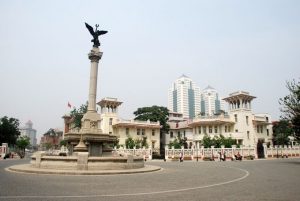
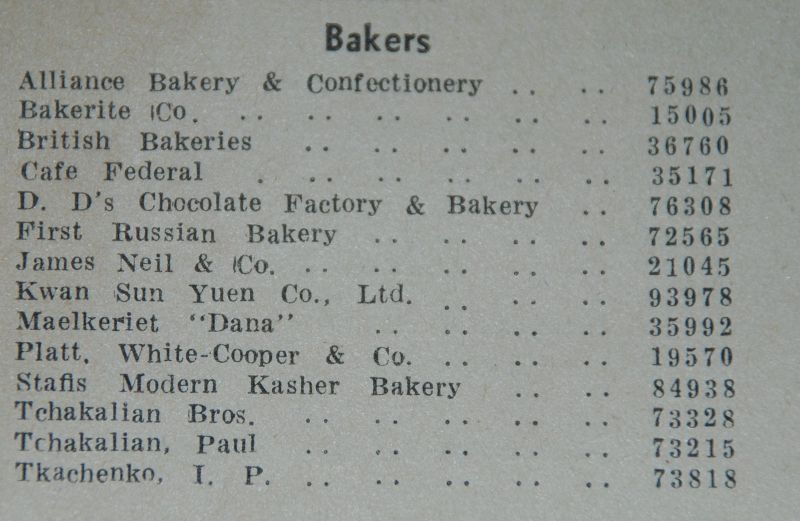 I looked into the “bakery” entry of this older version of the phone book and found out 15 entries. I remember reading that the bakery business in the 30’s was run by many Russians in Shanghai. By looking at the names of the shop, at least 5 of them were run by Russians. The most obvious was First Russian bakery, Tchakalian (more about in a further post) and Tkachenko.
I looked into the “bakery” entry of this older version of the phone book and found out 15 entries. I remember reading that the bakery business in the 30’s was run by many Russians in Shanghai. By looking at the names of the shop, at least 5 of them were run by Russians. The most obvious was First Russian bakery, Tchakalian (more about in a further post) and Tkachenko.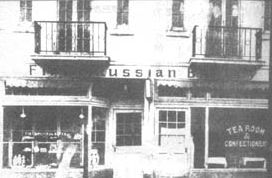 First Russian bakery is pictured right (picture is from the website of the Shanghai municipal archives). Located on 234-
First Russian bakery is pictured right (picture is from the website of the Shanghai municipal archives). Located on 234-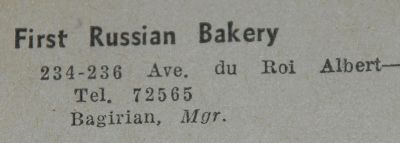 236 Avenue du Roi Albert (This now Shanxi Nan Lu, the location was approximately opposite Parkson on the other side of Shanxi Nan Lu). This was the urban art of the French Concession where many small apartment buildings were built, not far from
236 Avenue du Roi Albert (This now Shanxi Nan Lu, the location was approximately opposite Parkson on the other side of Shanxi Nan Lu). This was the urban art of the French Concession where many small apartment buildings were built, not far from 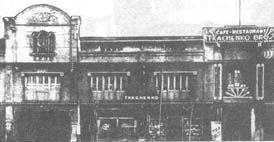 Tkachenko bakery was also pictured on the same website.
Tkachenko bakery was also pictured on the same website.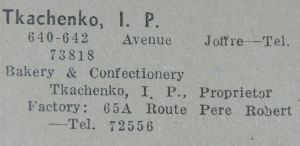
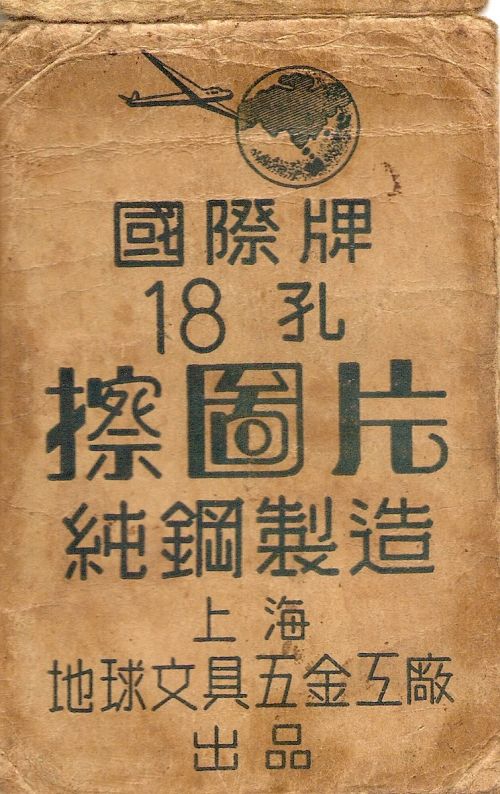 Going to antic markets is always like a treasure hunt. Finding things is a matter of luck, but also of knowledge. The best example is surely this little envelop that I found last week. I had seen it before but never really noticed it. It’s a pretty banal object, a envelop for a drawing tool that came with it. It has become grey with time and usage but the prints are still clearly visible. The ruler in it is still stainless and nearly as new (see picture below).
Going to antic markets is always like a treasure hunt. Finding things is a matter of luck, but also of knowledge. The best example is surely this little envelop that I found last week. I had seen it before but never really noticed it. It’s a pretty banal object, a envelop for a drawing tool that came with it. It has become grey with time and usage but the prints are still clearly visible. The ruler in it is still stainless and nearly as new (see picture below). This is typical of the the Shanghai style, or Haipai. At written on the envelop, the ruler was made by a Shanghai company. It is a simple drawing tool, an industrial mass consumption product but the envelop design really gave it a very modern look for the time. Along with the “International Brand” ( with the logo with plane and earth), the design gave the impression to the buyer that he was getting a piece of this bright new world on display in magazines and posters. Haipai styling was not limited to newspapers, books and other intellectual objects but also also applied to more usual objects, making them truly Shanghainese. This simple object is a true reflection of Shanghai at that time, a true Shanghai product.
This is typical of the the Shanghai style, or Haipai. At written on the envelop, the ruler was made by a Shanghai company. It is a simple drawing tool, an industrial mass consumption product but the envelop design really gave it a very modern look for the time. Along with the “International Brand” ( with the logo with plane and earth), the design gave the impression to the buyer that he was getting a piece of this bright new world on display in magazines and posters. Haipai styling was not limited to newspapers, books and other intellectual objects but also also applied to more usual objects, making them truly Shanghainese. This simple object is a true reflection of Shanghai at that time, a true Shanghai product.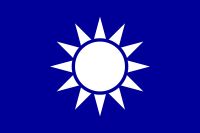


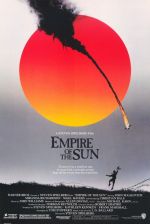 I remember the movie’s poster when it came out in 1987. Steven Spielberg was already famous, though not the star that he is now but the movie was much talked about. I did not see it then, and it’s only recently that I realized its connection with old Shanghai.
I remember the movie’s poster when it came out in 1987. Steven Spielberg was already famous, though not the star that he is now but the movie was much talked about. I did not see it then, and it’s only recently that I realized its connection with old Shanghai.
 I always try to write unbiased reviews… but this one will be a bit different since I have been involved in creating the book. “Promenades au coeur de l’ancienne concession Francaise” is the new version of an old guide about Shanghai’s French concession. As the original one, this book was made by “A pleines mains” an expat charity in Shanghai. Proceeds are used in various help projects in Shanghai and the surrounding cities. The original guide was published in 2002 and has become out of print since then. It has been transformed into a number of guided walks throughout the French Concession. Each walk is about one hour and can be easily fit into a busy afternoon shopping or as a short break in a business trip. Walks are spread the old French Concession and the adjacent Xu Jia Hui area. One of them passes by the entrance of the lane where I live. Fortunately, my house is not included… which will avoid disturbing the quietness of my little private Shanghai.
I always try to write unbiased reviews… but this one will be a bit different since I have been involved in creating the book. “Promenades au coeur de l’ancienne concession Francaise” is the new version of an old guide about Shanghai’s French concession. As the original one, this book was made by “A pleines mains” an expat charity in Shanghai. Proceeds are used in various help projects in Shanghai and the surrounding cities. The original guide was published in 2002 and has become out of print since then. It has been transformed into a number of guided walks throughout the French Concession. Each walk is about one hour and can be easily fit into a busy afternoon shopping or as a short break in a business trip. Walks are spread the old French Concession and the adjacent Xu Jia Hui area. One of them passes by the entrance of the lane where I live. Fortunately, my house is not included… which will avoid disturbing the quietness of my little private Shanghai.